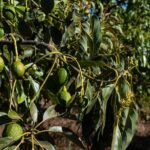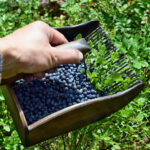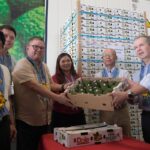Peru agriculture amongst those hurt in Russia fertilizer export sanctions

Peruvian agriculture is among those facing production delays due to global fertilizer production setbacks in the last year.
A Feb. 19 Bloomberg article, headlined, “Russia and China Have a Stranglehold on the World’s Food Security,” describes how Russia’s invasion of Ukraine a year ago, and subsequent trade sanctions, disrupted fertilizer supplies. Most-harmed is agriculture production in much of Africa.
Bloomberg reporters penned: “Russian fertilizer billionaire Andrey Melnichenko, the founder of EuroChem Group AG, argues the European Union’s sanctions regime has clogged up trade to such an extent that it’ll have caused a total curtailment of fertilizer shipments by some 13 million tons by the one-year mark of the war on Feb. 24. Melnichenko is himself subject to sanctions.”
Bloomberg reports, “The UN’s Food and Agricultural Organization set up a trade tracker last year showing that many net importers in Latin America, eastern Europe and Central Asia depend on Russia for more than 30% of all three main fertilizer ingredients.”
Ukraine Agriculture Minister Mykola Solskyi, warned in January that Europe’s breadbasket this summer’s grain harvest will be affected, since fewer nutrients were purchased and applied in the fall.
Bloomberg adds that President Joe Biden’s administration announced $500 million in grants to increase American-made fertilizer production. The U.S. produces fertilizer and also is a major importer. For now U.S. farmers still have access to plenty of nutrients. But, the publication adds, “That can’t be said of some of its neighbors. Latin America depends on imports for 83% of fertilizers applied, mostly from Russia, China and Belarus, according to the Washington-based International Food Policy Research Institute.
“That’s looking like a liability for Peru and its burgeoning agricultural industry. The Andean nation, perennially convulsed by political upheaval, has recorded a rare success story in its fruit and vegetable sector in recent years. It’s now the world’s No. 1 exporter of blueberries and a key supplier of avocados, asparagus, artichokes and mangoes in an industry predicted to be worth some $10 billion to the country this year.” But further growth and efforts to integrate smallholders into modernized industry practices have been cast in doubt as Peru struggled to access fertilizer. The previous government announced subsidies for the smallest farmers, but implementation was patchy, said Valeria Pineiro, IFPRI’s acting head for Latin America.
On several occasions Peru’s government tried and failed to secure imports. In the absence of alternatives, it began supporting a program to increase use of organic fertilizers from seabird excrement, known as guano. But that doesn’t nearly cover what’s needed, said Gabriel Amaro, head of Peru’s agricultural export association AGAP. “The small farmer hasn’t necessarily been able to apply fertilizer, or has applied very little,” meaning loss of productivity and even damage to plants, he said.
Peru “is being hit hard,” said Pineiro. It’s faced with some big problems, and “they’re all political.”
Bloomberg indicates that 48 nations in Africa, Asia and Latin America are identified by the International Monetary Fund as most at risk from the shock to food and fertilizer costs fanned by Russia’s invasion of Ukraine. One year on, the upheaval caused to world fertilizer markets is seen by the UN as a key risk to food availability in 2023.
“Yet alongside humanitarian considerations, it’s the realization that much of the world relies on just a few nations for most of its fertilizers — notably Russia, its ally Belarus and China — that’s ringing alarm bells in global capitals. Just as semiconductors have become a lightning rod for geopolitical friction, so the race for fertilizers has alerted the US and its allies to a strategic dependency for an agricultural input that is a key determinant of food security.”
That’s pushed fertilizers and those who control them, Bloomberg notes, to the forefront of the political agenda around the world. The U.S. State Department is beefing up its expertise on fertilizers, presidents are tweeting about them, they’re featuring in election campaigns, and becoming the focus of tensions between countries as well as an unlikely currency of diplomacy. They’re also being pulled into the contest of narratives over who’s to blame for the fallout from Russia’s war on Ukraine.
Last year’s jolt to the $250 billion global fertilizer industry highlighted the role of Russia and Belarus as exporters of almost a quarter of all world crop nutrients. Bloomberg continues that, while Russia’s agricultural products including the three main types of fertilizer — potash, phosphate and nitrogen — are not targeted by sanctions, exports remain curtailed through a combination of disruptions to ports, shipping, banking and insurance.














































